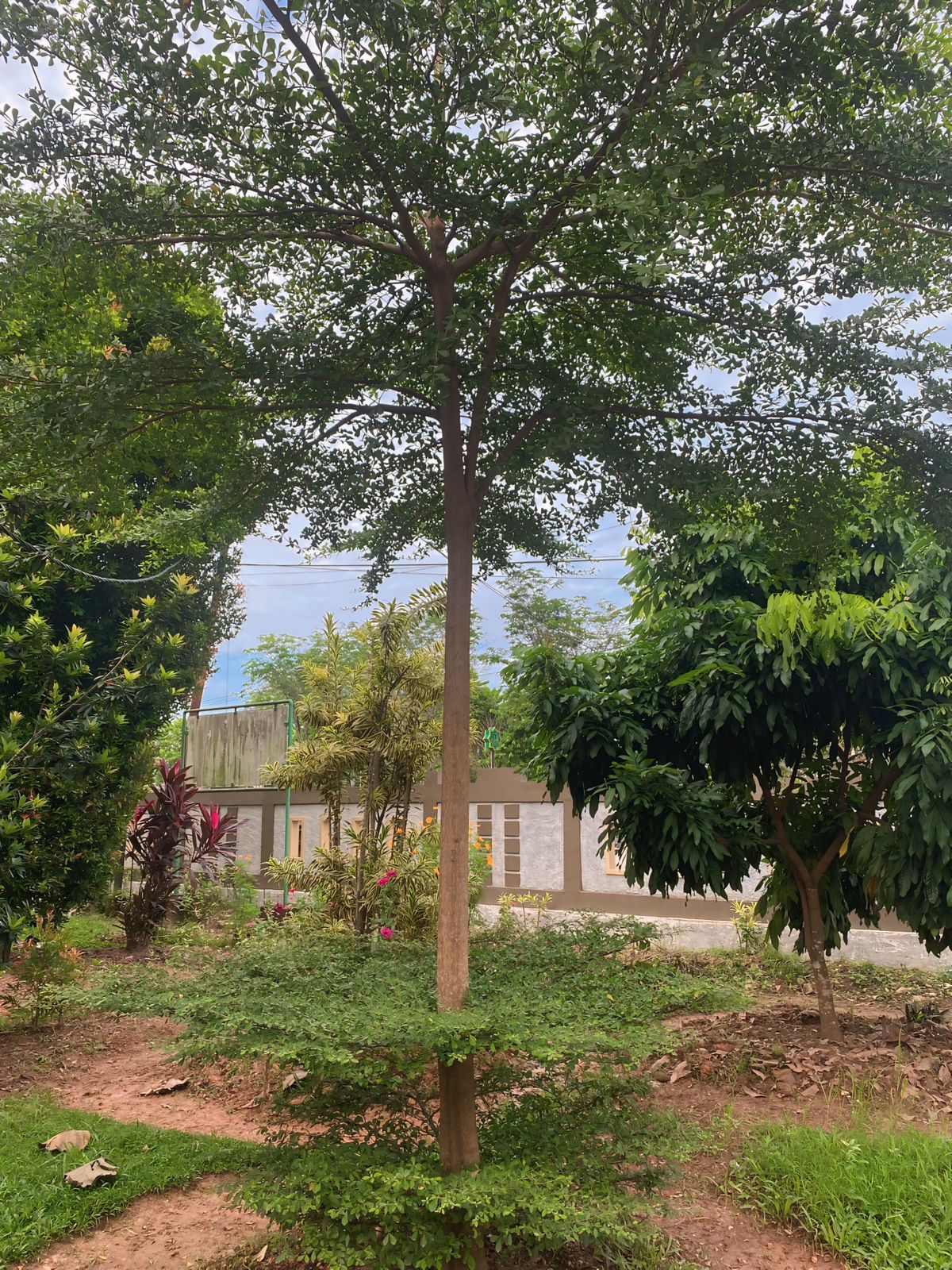Terminalia mantaly
Famili : COMBRETACEAE
Spesies : Terminalia mantaly
Local Name :
- Borneo: Ketapang kencana
Description : Deciduous tree, 10-35 m. Wood brown or reddish, rather heavy and close-grained. Young branchlets thickened, densely sericeous-tomentose or pubescent fairly quickly glabrescent. Leaves chartaceous or papyraceous, spirally arranged and crowded at the ends of the branches, spreading, usually shiny and glabrous but occasionally appressed-pubescent or tomentose especially on the lower surface, minutely verruculose above and below, typically obovate sometimes elliptic-obovate or even elliptic, rounded or shortly acuminate at the apex and somewhat narrowed below the middle to a subcordate base usually with 2 glands, 8-25(-38) by 5-14(-19) cm, varying considerably in size and shape (see notes); usually with c. 6-9 pairs of rather widely spaced nerves; domatia often present, sometimes hairy; petiole thick, usually sericeous-pubescent, 5-15(-20) mm. Seed-leaves transversely elliptic or kidney-shaped. Flowers white or whitish, sessile in axillary spikes 8-16 cm long, in which the majority of the flowers are usually male, a few bisexual flowers only being present towards the base; rhachis usually appressed pubescent, sometimes glabrous. Bracts c. 1 mm long, early caducous. Lower receptacle (ovary) sericeous or glabrous, usually 1-4 mm long, occasionally up to 7 mm long; upper receptacle usually nearly glabrous, shallow-cupuliform, 1.5 by 3 mm. Calyx lobes ovate-triangular, 1-1.5 mm long. Filaments glabrous, 2 mm; anthers 0.5 mm long. Disk barbate. Style glabrous, 2 mm. Fruit a usually glabrous, reddish, yellowish or greenish drupe, ovoid or ellipsoid, more or less laterally compressed or scarcely compressed, circumalate with a stiff rigid wing c. 2 mm broad or wing obsolete and scarcely conspicuous, very variable in size, 3.5-7 by 2-5.5 cm, cultivated races often having conspicuously larger fruits than the wild plants. [from Flora Malesiana]
Ecology : Indian almond occurs naturally on sandy or rocky beaches. It is tolerant of saline soils and not averse to ocean spray; it is very wind-resistant and it prefers full sun or medium shade. It survives only in tropical and near-tropical regions with a more or less humid climate. In its natural habitat the annual precipitation is about 3000 mm. Indian almond grows well on all soils providing there is good drainage. It is frequently cultivated up to 800 m altitude. Dispersed both by sea and animals (eaten by flying foxes). The tree sheds its leaves all at once, quite suddenly, usually twice a year (January or February and July or August). Unlike most tropical trees, the leaves turn first yellow, then vivid red before falling giving a well-marked 'autumn colour'.

